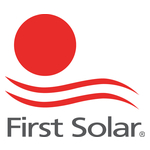The industry overview
The consumer-packaged-goods (CPG) industry has historically outperformed most other industries, thanks to high growth and consistent margins. But since 2012, the formula has broken down. Several factors, including inflation (which affects both consumer spending and corporate cost), market saturation, intense competition, changing consumer tastes and behaviors, and a fragmented consumer base have presented challenges for growth. Additional headwinds include climate change, which affects key ingredients, including cocoa. These challenges have been persistent and have forced companies to seek new paths for value creation—and to reconsider the role that M&A, including divestitures and alternative transactions such as joint ventures and alliances, can play.

From 2013 to 2018, many CPG players chased growth inorganically, and several transformational deals helped shape the industry. Then, from 2019 to 2022, multiple CPG companies sought a more incremental approach, in particular by acquiring higher-growth brands and entering into adjacencies. Smaller challenger brands were snapped up at tech-style multiples, riding “better for you” tailwinds with the potential for larger companies to substantially boost their growth rates. But as multiples went up, the COVID-19 pandemic arrived, and consumers began returning to long-trusted brands—and CPG companies rethought their strategy.
With interest rates and industry multiples still high over the past several years, we have seen less deal activity. Moreover, many leading CPG companies are taking a more measured approach, focusing on midsize deals and seeking to achieve both growth and cost synergies. Companies have tried to overcome organic headwinds by pursuing inorganic strategies that not only support entry to adjacent or near-adjacent product categories (with accretive growth trajectories) but also have similar capability and operating requirements. This allows for meaningful top- and bottom-line synergies that justify high deal multiples.

This more balanced approach has been exemplified in several signature deals over the past two to three years, including Mondelēz International’s 2022 acquisition of Clif Bar, J.M. Smucker’s 2023 acquisition of Hostess Brands, and in 2024, Mars’s acquisition of US-based snack company Kellanova and Carlsberg’s announced deal for the UK-based beverage company Britvic—a transaction that would not only expand product offerings but also offer synergies in supply chain and distribution. Indeed, each of these deals provides the acquirer with exposure to incremental food categories that have higher future growth rates than the products in the acquirer’s core portfolio do while also providing opportunities to capture cost synergies (such as reduced expenses in direct inputs, distribution, and SG&A).
As we predicted last year, higher-than-average interest rates and high multiples foreshadowed lower deal volume and value in 2024 (especially in Europe). Additionally, given the challenges faced by CPG companies in seeking organic growth and consistently creating meaningful value, the flagship deals that were announced last year were more transformational in nature, allowing for considerable opportunities to capture large synergies. Indeed, the Mars deal has led other CPG companies in North America to seriously consider potential further consolidation in other nonfood and beverage consumer sectors that have struggled to achieve organic growth.
The broad downward trend of interest rates, coupled with CPG companies’ strong, cash-rich balance sheets (and greater ability to take on what is now more affordable debt), could suggest increased deal activity in the near future for the sector, with a mix of three types of transactions: signature, sector-shaping deals; sizable horizontal deals that enable greater subcategory consolidation; and targeted spin-offs of brands and business units that have limited synergies or growth prospects with their present owner. Strategic focus led Reckitt Benckiser, for example, to carve out a portfolio of noncore home care brands and consider divesting its nutrition business and Unilever to sell its ice cream business.
Opportunities for 2025—and beyond
Overall, we expect 2025 to be an active year for CPG deals. Strategic buyers clearly hold advantages when it comes to sector-shaping and horizontal deals, given the potential for combinational synergies. Financial buyers, for their part, are likely to be active as well—particularly given private equity (PE) funds’ proven ability to improve operational performance and create meaningful value. PE funds also hold substantial dry powder.
The consumer sector, of course, is broad, and much of this analysis has focused on the food-and-beverage sector. The emphasis is intentional: While we expect to see heightened activity across CPG sectors, particularly in the personal care and beauty sectors, we also expect that the food-and-beverage sector will continue to propel the lion’s share of deals.




